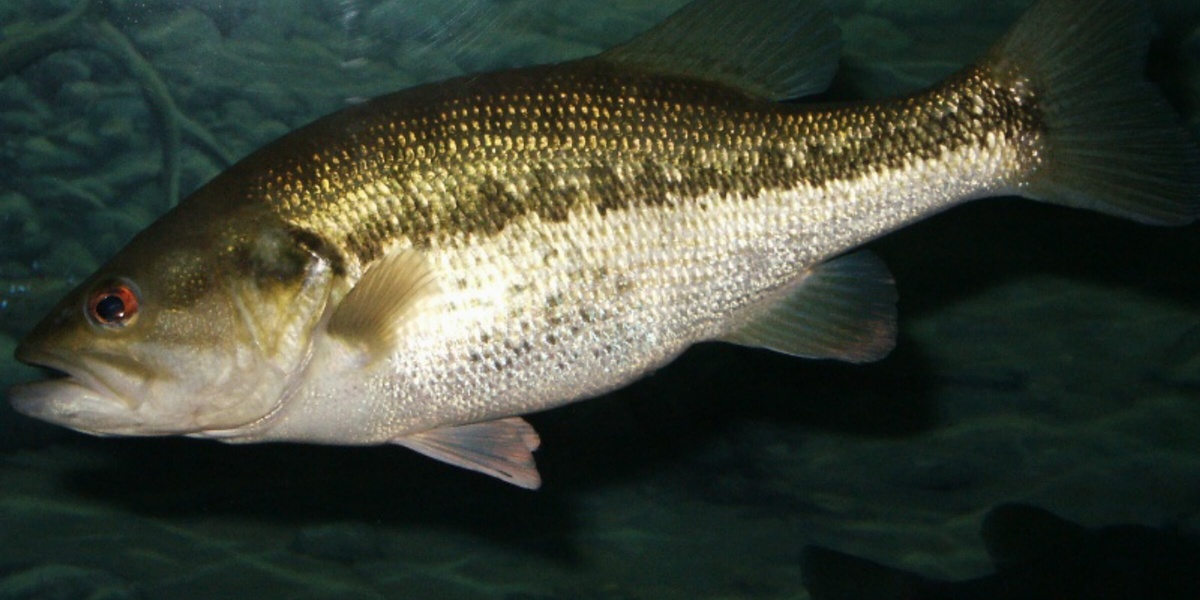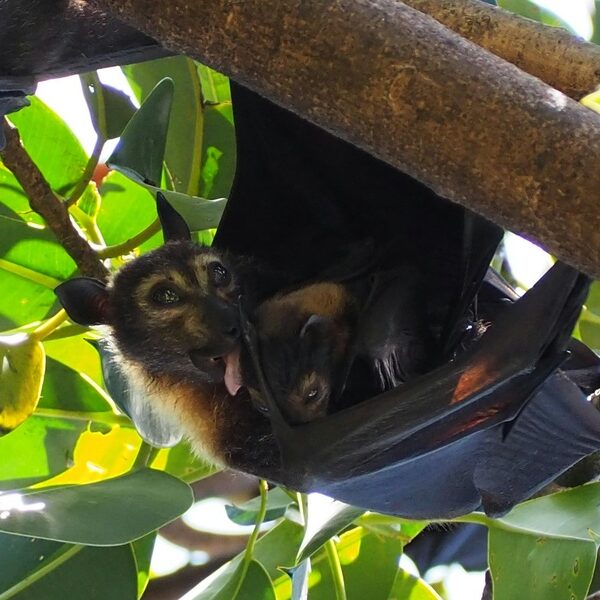The Great Dismal Swamp is a patchwork of pocosins, canals and blackwater ponds where freshwater and tidal systems meet. Those murky channels and flooded forests hide a surprising mix of fish adapted to low light, tannin-stained water and shifting salinity.
There are 29 Great Dismal Swamp Fish, ranging from American Eel to Yellow Perch. For each entry we provide Scientific name, Typical length (cm), Habitat where found so you can compare species at a glance — you’ll find below.
Where and when can I spot these fish in the Great Dismal Swamp?
Look for shallow edges of ponds, canal margins, tidal ditches and oxbow pools; spring and fall are best for active feeding and migration, while summer mornings and evenings often yield sightings. Use polarized glasses, quiet approach, and local maps of public access points.
How were the 29 species identified and organized?
The list combines published surveys, museum records and reliable field observations; species are grouped with their Scientific name, a Typical length (cm) to indicate common adult size, and Habitat where found so readers can match identification with likely locations.
Great Dismal Swamp Fish
| Common name | Scientific name | Typical length (cm) | Habitat where found |
|---|---|---|---|
| Largemouth Bass | Micropterus salmoides | 40 | Lake Drummond and canals, near submerged logs, cypress knees, and vegetation. |
| Bowfin | Amia calva | 60 | Throughout the swamp’s dark, slow-moving waters, especially in vegetated canals and ditches. |
| Longnose Gar | Lepisosteus osseus | 90 | Open waters of Lake Drummond and larger canals, often seen near the surface. |
| Black Crappie | Pomoxis nigromaculatus | 25 | Schools in Lake Drummond and deeper canals, often suspended around submerged trees and brush. |
| Bluegill | Lepomis macrochirus | 20 | Ubiquitous in all swamp habitats, from Lake Drummond to the smallest ditches. |
| Yellow Perch | Perca flavescens | 28 | Cooler, deeper waters of Lake Drummond and the main Feeder Ditch. |
| Chain Pickerel | Esox niger | 50 | Shallow, weedy areas of canals and along the shoreline of Lake Drummond. |
| Flier | Centrarchus macropterus | 18 | Slow-moving, heavily vegetated ditches and swamp margins with dark, acidic water. |
| Warmouth | Lepomis gulosus | 20 | Shallow, muddy-bottomed areas with dense cover like logs, stumps, and vegetation. |
| Redear Sunfish | Lepomis microlophus | 23 | Bottom of Lake Drummond and canals, especially near vegetation and woody debris. |
| White Catfish | Ameiurus catus | 35 | Common in Lake Drummond and the larger, deeper canals connected to it. |
| Brown Bullhead | Ameiurus nebulosus | 30 | Muddy bottoms of slow-moving ditches, canals, and shallow areas of the lake. |
| Yellow Bullhead | Ameiurus natalis | 28 | Vegetated, soft-bottomed shallow areas of ditches and swamp sloughs. |
| American Eel | Anguilla rostrata | 75 | Found throughout the swamp’s interconnected waterways, from the lake to small ditches. |
| Eastern Mosquitofish | Gambusia holbrooki | 4 | Abundant in shallow, still waters along the edges of canals and ditches. |
| Golden Shiner | Notemigonus crysoleucas | 15 | Schools in quiet, weedy areas of canals and Lake Drummond. |
| Redfin Pickerel | Esox americanus americanus | 25 | Smaller, heavily vegetated, slow-moving ditches and swampy backwaters. |
| Eastern Mudminnow | Umbra pygmaea | 10 | Shallow, densely vegetated, muddy-bottomed ditches and swamp margins; burrows in mud. |
| Swampfish | Chologaster cornuta | 8 | Secretive in dense vegetation, leaf litter, and undercut banks of blackwater streams. |
| Pirate Perch | Aphredoderus sayanus | 10 | Slow-moving, heavily vegetated backwaters and ditches with soft, mucky bottoms. |
| Banded Sunfish | Enneacanthus obesus | 7 | Quiet, acidic, heavily vegetated waters of swamp pools and ditches. |
| Bluespotted Sunfish | Enneacanthus gloriosus | 7 | Clearer, vegetated areas of slow-moving canals and ditches; less tolerant of high acidity. |
| Tadpole Madtom | Noturus gyrinus | 9 | Secretive among detritus, leaf litter, and thick vegetation on soft bottoms. |
| Ironcolor Shiner | Notropis chalybaeus | 6 | Schools in dark, acidic, slow-moving blackwater streams and ditches with vegetation. |
| Creek Chubsucker | Erimyzon oblongus | 20 | Bottom-dweller in canals and ditches, often in areas with slow current. |
| White Perch | Morone americana | 23 | Abundant in the open waters of Lake Drummond and main canals. |
| Gizzard Shad | Dorosoma cepedianum | 30 | Large schools in the open waters of Lake Drummond and the Feeder Ditch. |
| Common Carp | Cyprinus carpio | 65 | Larger canals and deeper pools, especially in areas with soft bottoms. |
| Blackbanded Darter | Percina nigrofasciata | 9 | Clearer, flowing water over sand or gravel in the larger swamp-draining streams. |
Images and Descriptions
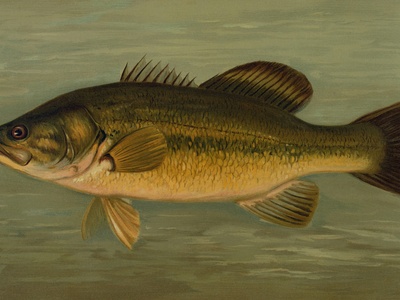
Largemouth Bass
The swamp’s top predator and most sought-after game fish. Known for aggressive strikes, anglers find them lurking near structure. The acidic, dark water often produces fish with very dark, beautiful coloration, making for a memorable catch.
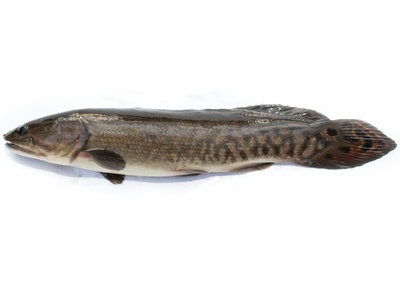
Bowfin
A prehistoric predator, often called a ‘mudfish’. Its long dorsal fin, bony head, and powerful bite make it a unique and hard-fighting catch. They are native survivors, thriving in the swamp’s low-oxygen, dark-stained waters.

Longnose Gar
Another living fossil, recognized by its long, tooth-filled snout and armored scales. While not typically eaten, they are a challenging sport fish. They are often seen gulping air at the surface in the slow-moving swamp waters.

Black Crappie
A popular panfish, prized by anglers for its excellent taste. They form large schools, especially in cooler months. Anglers target them for fish fries, and they are a key part of the swamp’s fishery.
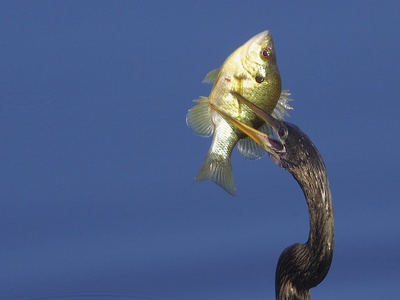
Bluegill
One of the most common and recognizable fish in the swamp. A favorite for young anglers, this scrappy panfish readily takes a variety of baits. Its deep body and vibrant colors make it a classic swamp resident.

Yellow Perch
A popular and tasty game fish identified by its yellow sides and dark vertical bars. They are most active during cooler weather. Lake Drummond is known for producing some very large yellow perch, making it a destination for anglers.
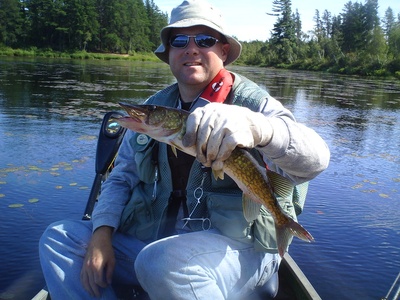
Chain Pickerel
A long, slender predator with a distinctive chain-like pattern on its sides. It is an aggressive ambush predator, providing exciting action for anglers casting lures. Its mouthful of sharp teeth requires careful handling.
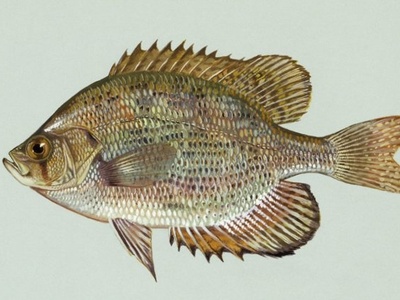
Flier
A deep-bodied, round sunfish perfectly adapted to the swamp’s acidic blackwater. Often mistaken for a crappie but has a smaller mouth. It’s a classic swamp-dwelling panfish often found lurking in dense vegetation.
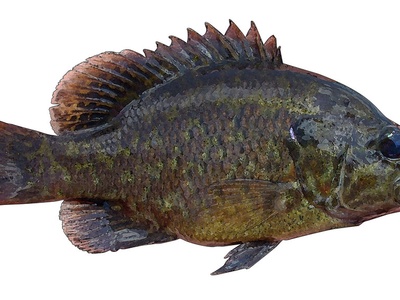
Warmouth
A thick-bodied sunfish with a large mouth, often called a ‘stumpknocker’. It is highly tolerant of the swamp’s warm, low-oxygen water. Its aggressive nature makes it a fun, feisty panfish to catch around heavy cover.

Redear Sunfish
Also known as a ‘shellcracker’ for its habit of eating snails. It has a distinct red or orange edge on its gill cover. It’s a popular panfish, slightly larger on average than bluegill, and a prized catch.
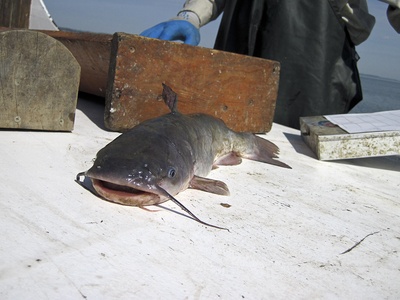
White Catfish
An introduced species that has become well-established as a primary catfish in the lake. It is a popular target for anglers fishing on the bottom with natural baits. Its moderately forked tail distinguishes it from native bullheads.
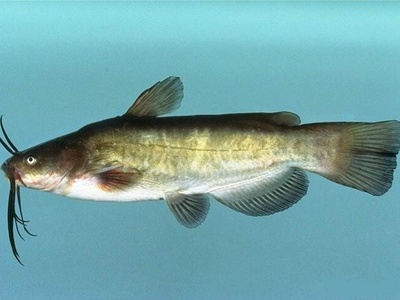
Brown Bullhead
A very common native catfish, well-adapted to the swamp’s murky, low-oxygen waters. It has dark barbels (whiskers) and a square tail. It is a resilient and important part of the swamp’s bottom-dwelling community.

Yellow Bullhead
Similar to the brown bullhead but easily identified by its yellowish chin barbels. It is another native catfish species that thrives in the swamp’s unique environment. It is an opportunistic bottom feeder, active mainly at night.
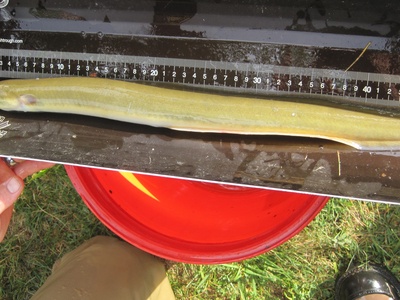
American Eel
A fascinating catadromous fish, born in the ocean and migrating to freshwater to mature. Its serpentine body allows it to navigate dense vegetation and even cross wet land. They are secretive, primarily nocturnal hunters.
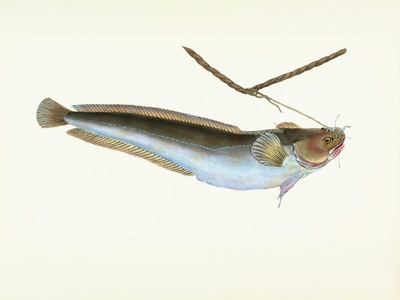
Eastern Mosquitofish
A small, hardy live-bearing fish known for its voracious appetite for mosquito larvae. It plays a crucial role in controlling insect populations. Though small, it is one of the most numerous fish in the swamp’s shallows.

Golden Shiner
A common and important forage fish, providing food for predators like bass, pickerel, and perch. Their silvery-gold bodies flash in the dark water as they move in large schools. They are also used as live bait by anglers.

Redfin Pickerel
A smaller cousin of the chain pickerel, perfectly at home in the thickest swamp vegetation. It has reddish fins and a more subdued pattern. This ambush predator feeds on small fish and insects in the swamp’s shallowest waters.

Eastern Mudminnow
A small, secretive fish that is a true swamp specialist. It can survive in extremely low oxygen by gulping air and can burrow into mud to escape drought. Its resilience makes it a classic inhabitant of the swamp’s harsh conditions.
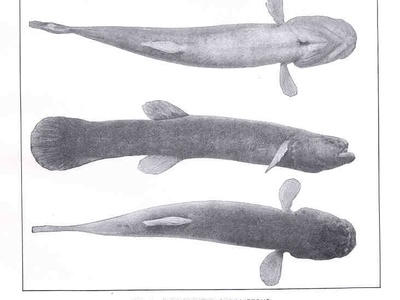
Swampfish
A small, elusive fish that is rarely seen. It is largely nocturnal and spends its days hidden deep within vegetation mats and root wads. Finding this cryptic species is a sign of a healthy, complex swamp habitat.
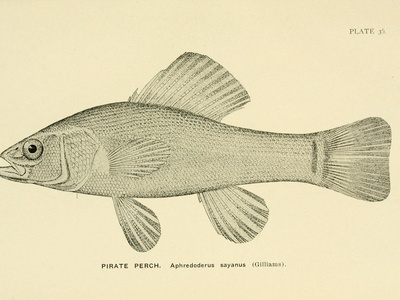
Pirate Perch
A unique and fascinating small fish. Its anus migrates forward as it matures, ending up under its throat. This solitary, nocturnal predator is a classic resident of dark, swampy waters, feeding on insects and tiny fish.
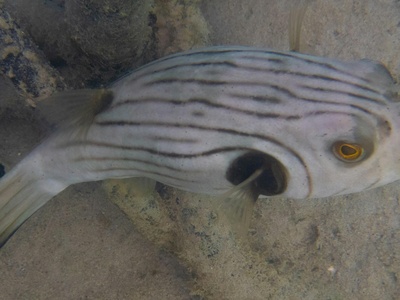
Banded Sunfish
A small, beautiful sunfish with dark vertical bands and iridescent spots. It is a specialist of blackwater swamp habitats and is considered an indicator of good water quality. It is often found with the bluespotted sunfish.
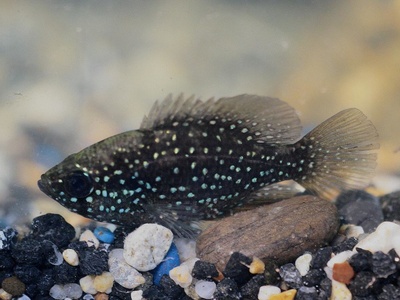
Bluespotted Sunfish
Another small, colorful sunfish, covered in brilliant blue or silver spots. It prefers areas with abundant submerged vegetation. Like its cousin the banded sunfish, it is a gem of the swamp’s smaller aquatic habitats.
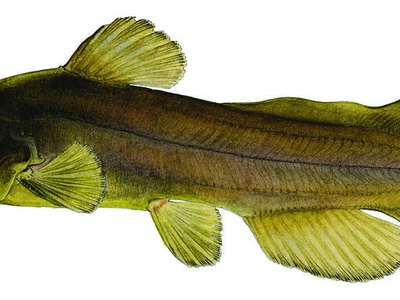
Tadpole Madtom
A tiny, secretive native catfish that looks like a tadpole. It has a mild venom in its pectoral spines that can cause a sting similar to a bee’s. It is nocturnal, hiding during the day and foraging for insects at night.
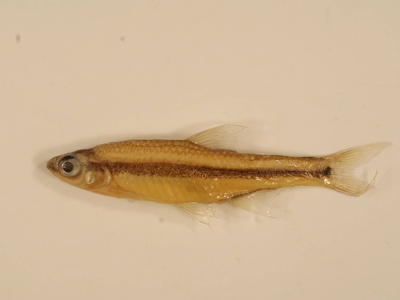
Ironcolor Shiner
A small minnow that thrives in the swamp’s tannin-stained waters. It is named for its dark, “iron-colored” lateral stripe. Its presence indicates classic blackwater habitat, and it is an important part of the food web.

Creek Chubsucker
A native sucker fish with a subterminal mouth adapted for feeding on the bottom. It consumes algae, detritus, and small invertebrates from the substrate. Younger fish have a distinct dark stripe, which fades in adults.
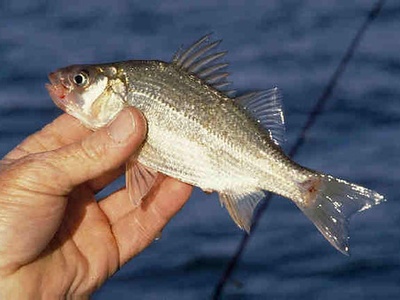
White Perch
An introduced species that can become extremely abundant. It is a popular panfish for anglers, known for being easy to catch. They travel in large schools and can impact native fish populations through competition and predation.

Gizzard Shad
A silvery, deep-bodied forage fish that is a primary food source for many predators. It is named for its muscular, gizzard-like stomach used to grind up plankton and detritus. They are a vital link in the lake’s food web.
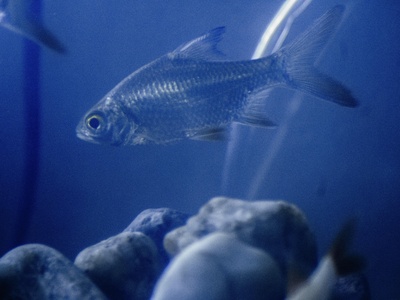
Common Carp
A large, non-native species introduced from Eurasia. Known for its hard-fighting ability, but it can negatively impact water quality by stirring up bottom sediments while feeding. They are occasionally caught by anglers in the swamp’s canals.

Blackbanded Darter
A small, beautifully patterned bottom-dwelling fish in the perch family. It “darts” between rocks and debris, feeding on tiny insects. It requires cleaner, flowing water and is found in the streams that feed and drain the swamp.
